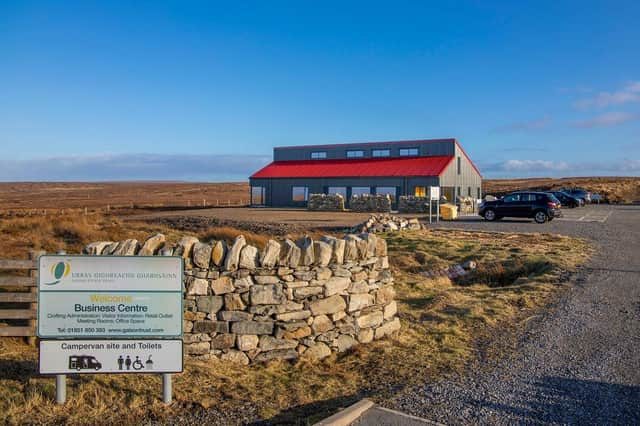Land reform needs policy to match warm words


Land reform is far from uncharted policy territory in Scotland. In 1997 amid the dying embers of John Major’s Conservative Government, the UK Parliament passed the Transfer of Crofting Estates (Scotland) Act. Later that year, Brian Wilson, then a Scottish Office Minister in the newly elected Labour Government, instructed HIE to create a Community Land Unit to support communities intent on taking ownership of the land where they lived.
In his 1998 McEwen Lecture on ‘Land Reform for the 21st Century’, the then Secretary of State for Scotland, Donald Dewar remarked, ‘There is undoubtedly a powerful symbolism – which attracts me greatly – of land reform being amongst the first actions of our new Scottish Parliament’.
Advertisement
Hide AdAdvertisement
Hide AdThat symbolism has been matched by a practical programme brought forward by successive Scottish Governments, underpinned by strong cross-party support. It includes the Land Reform (Scotland) Act 2003 which introduced the Community and Crofting Community Rights to Buy during the first Labour-Liberal Democrat coalition Government.


Further legislation was initiated by the SNP Government during the Parliament’s fourth session between 2011 and 2016. The Community Empowerment (Scotland) Act 2015 introduced the Community Right to Buy Abandoned, Neglected or Detrimental Land and asset transfer provisions to enable community bodies to request control of land and built assets from public authorities.
The Land Reform (Scotland) Act 2016 introduced a Land Rights and Responsibilities Statement, a Community Right to Buy to further Sustainable Development, and established the Scottish Land Commission to keep land reform on the public policy agenda.
Much of the policy impetus is linked to Scotland’s unusually concentrated pattern of private rural land ownership, of which 67% has been calculated as being owned by 0.025% of the population. Land reform’s detractors argue that it’s land use, not land ownership, that matters. That conveniently ignores the fact that land ownership and land use are inextricably linked.
Advertisement
Hide AdAdvertisement
Hide AdConsider this observation from ‘The Land of Scotland and the Common Good’, the influential 2014 report of the Scottish Government-appointed Land Reform Review Group which states, ‘Ownership is the key determinant of how land is used, and the concentration of private ownership in rural Scotland can often stifle entrepreneurial ambition, local aspirations and the ability to address identified community need. The concentrated ownership of private land in rural communities places considerable power in the hands of relatively few individuals, which can have a huge impact on the lives of local people and jars with the idea of Scotland being a modern democracy.’
Consider too the Scottish Land Commission’s investigation of issues associated with large scale and concentrated landownership in Scotland which noted fear of repercussions for “going against the landowner” expressed by some respondents in their evidence. The Commission concluded that ‘this fear was rooted firmly in the concentration of power in some communities and the perceived ability of landowners to inflict consequences such as eviction or blacklisting for employment/contracts on residents should they so wish’.
There is clear evidence that the Scottish public is concerned about wealth inequalities linked to concentrated land ownership too. Scottish Government research on ‘Attitudes to Land Reform in Scotland’ published in 2020 found that respondents considered land ownership inequality to be one of the biggest challenges for the future of Scotland's land.
A total of 71% of survey respondents supported widening ownership of both rural and urban land to include more public, community and third sector ownership. The Government’s research also noted that, ‘Participants felt concentration of ownership was at the expense of the majority of people benefiting from the land and that it had implications for access to and use of the land’.
Advertisement
Hide AdAdvertisement
Hide AdMore recently, attention has turned to Scotland’s increasingly opaque rural land market and the structural role of concentrated ownership in determining who benefits from land-related wealth.
Growing demand for estates in the face of relatively static availability has sent their prices into the stratosphere. Analysis for the Scottish Land Commission shows that the average price of estates has increased by a staggering 87% between 2020 and 2021, rising for £4.7 million to £8.8 million. Much of that is driven by prospective ‘green’ purchasers including corporations, large charities, investment companies and wealthy individuals variously motivated by natural capital, rewilding or carbon offsetting opportunities, alongside traditional ‘lifestyle’ and sporting buyers. The analysis also shows an increase in ‘off market’ estate sales, ‘with 45% of estates marketed and 33% of sales completed off-market in 2020 (an increase on the last 4-5 years)’ and ‘a further marked increase [occurring] in 2021, with 64% of successful sales occurring off market’.
Against that backdrop, it’s unsurprising that tackling the structural barrier that concentrated rural land ownership poses for communities’ sustainability is the focus of several proposals in the Government’s consultation paper. As Land Reform Minister, Màiri McAllan, states in her introduction to the paper, “Land is a vital resource that underpins the wealth, and the well-being, of our nation as a whole. Private ownership of land – particularly at scale - has in the past conferred significant prestige, associated with for example hereditary titles, status and ability to influence policy and law.
“While many aspects of society have become more equitable, the privilege associated with the ownership of land at scale remains and takes new forms”.
Advertisement
Hide AdAdvertisement
Hide AdProposals set out in ‘Land Reform in a Net Zero Nation’ offer encouragement that Scotland’s antiquated pattern of concentrated ownership can be diversified to more closely resemble that of most other modern democratic societies. They include a particular focus on large scale holdings, with proposals to introduce a Public Interest Test on transfers of such landholdings; a duty to provide prior notification of an intention to sell and a linked pre-emptive right to buy for communities; compulsory compliance with aspects of the currently voluntary Land Rights and Responsibilities Statement; compulsory Land Management Plans; and conditionality regarding receipt of public funding for land-based activities.
Other proposals include creating a new flexible ‘Land Use Tenancy’ for smallholdings to enable tenant farmers and others to undertake a combination of agricultural and non-agricultural activities. The paper also proposes to ‘explore’ introduction of a requirement that ‘those seeking to acquire large-scale landholdings need to be registered in an EU member state or in the UK for tax purposes’.
Welcome as this is there are important gaps in the consultation paper’s focus, given its stated ambition to tackle scale and concentration of ownership. For example, it omits mention of imposing an upper limit on the scale of holdings that can be held by individuals or consortia. Neither does it make mention of amending the existing framework of Community Rights to Buy to ensure they are entirely fit for the purpose of enabling communities to buy land in support of their own prosperity and sustainability.
The Government’s consultation paper is likely to provoke considerable discussion in respondents’ submissions about how ‘large scale’ rural landholdings should be classified. That matters because whatever metrics are finally settled on will influence both the scope and impact of several key proposals, most obviously regarding the Public Interest Test on land transfers, the duty to notify of an intention to sell, making aspects of the Land Rights and Responsibilities Statement compulsory, and the introduction of compulsory Land Management Plans.
Advertisement
Hide AdAdvertisement
Hide AdThe paper proposes three criteria for classifying ‘large-scale’ landholdings, any one of which would trigger the above requirements. They include a fixed threshold of 3,000 hectares; land accounting for more than a fixed percentage of a data zone (or adjacent data zones) or local authority ward(s) designated as an Accessible Rural Area or Remote Rural Area; and land accounting for more than a specified minimum proportion of a permanently inhabited island. Some consultation respondents may view the fixed threshold of 3,000 hectares as too high to have practical impact, particularly given that the Scottish Land Commission has suggested it could be as low as 1,000 hectares.
For now, Government’s focus will be on encouraging the submission of views on ‘Land Reform in a Net Zero Nation’ before the consultation closes on September 25th. Many of its proposals will doubtless be opposed by vested landed interests who need no reminding that large-scale rural land ownership confers economic and political power. Be that as it may, the Scottish Government needs to hold fast to the policy intention to diversify ownership, increase transparency, and ensure Scotland’s land wealth is retained by communities and the wider common good. Both Government and Parliament will be aware that warm words must be matched by robust and progressive legislative action in the months ahead.
Dr Calum MacLeod is Community Land Scotland’s policy director. This article is written in a personal capacity. @CalumMacleod07